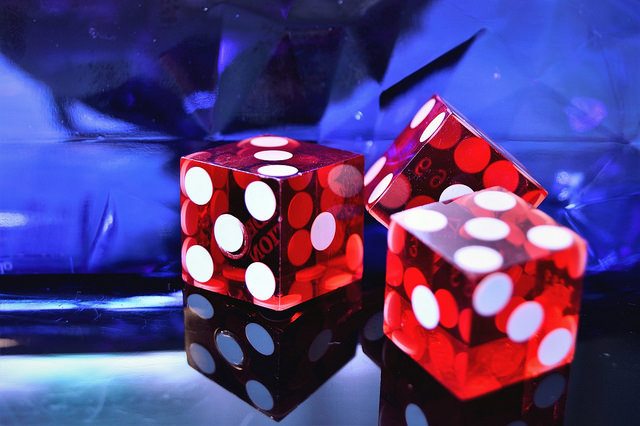
Roll 4d6, drop the lowest, do it six times, put ’em where you want ’em. It’s a classic. Want something different? The Tales of the Valiant Player’s Guide has three different ways to generate ability scores!
It’s common in modern RPGs to have a lot of control over character generation. In the Tales of the Valiant RPG, ability scores (STR, DEX, CON, etc.) are the only random part of character generation.
But if you want your character to be less premeditated, a simple way to do that is to roll ability scores in order, without assigning them. What you get from the dice decides a lot about who your character will be.
The next time your party has to recover from a TPK or you, as the GM, want to shake up a world you’ve made, consider some of these new attribute generation methods to put a spin on those rolls.
1. Aim High!
Roll 2d6+1d10 six times. Assign them where you like.
Why It’s Great
You’re about four times as likely to get an 18 with this method compared to 4d6 drop the lowest, and slightly more likely to get a 17. This increases your odds of doing really, really well.
Why You Hate
Despite the good news, this underperforms 4d6 drop the lowest. There’s no cushion for 1s, so get ready for some stinker ability scores.
2. Mother of All Bombs: 20d6
Find every d6 you can lay hands on. Fill your meaty mitts with cubes, and roll 20d6 all at once.
Survey what fate has wrought, and look for any 2s. Get rid of two of them. You have eighteen dice left.
If you don’t have two 2s, drop as many 1s as necessary to make up for it. If you don’t have any 2s or 1s, reroll everything because otherwise, that Greek deity you rolled up will make everyone think you cheated.
Now, make six clusters of three out of those eighteen, however you like. Assign them where you want.
Why It’s Great
You’re a rock star at your main thing. You’re almost assured one 18, and probably another really good secondary ability. And the mini-game of sorting your dice and figuring out how to put them in just the right place is nerdy fun.
Why You Hate
This will do a little worse that 4d6 drop the lowest. You’ll probably have either one awesomely bad ability score or several deeply mediocre ones.
3. Blackjackery
Get a standard deck of cards. Deal 2 cards for each ability score. For maximum drama, deal one face up and one face down and reveal them slowly. This one is especially fun if you’re recording your game for streaming or posterity.
- Numbers 2–10 are face value.
- Jacks are 10 unless another card is 10 or a face card. Then Jack is 1.
- Queens are 7 unless another card is 10 or a face card. Then Queen is 10.
- Kings are 10 regardless.
- Ace is 1 or 11 at your discretion.
You can hit to get another card before the facedown card is revealed. If you go over 18, you bust and your ability score is 8.
Why It’s Great
High drama at the table with friends.
Why You Hate
A deck of regular playing cards is a flat curve compared to dice, but blackjack-style card values bring that curve back—on the high end. About 30% of the cards are potentially a 10 or more. You’d think that’s a good thing, but it means you’re more likely to bust if you hit. But what, are you just going to be happy with a 13?
Extra Fun
Have another player look at your facedown card and advise you on how to play. For every ability score you wind up with under 14, they get a +1 bonus to add to one of their ability scores.
4. Pick your Poison
Assign rolls to attribute scores ahead of time. Your top score is 18.
Roll 2d6+1d4
Roll 3d6
Roll 2d6+1d8
Roll 2d6+1d10
Roll 2d6+1d12
Roll 1d6+1d20
Why It’s Great
There’s a 50% chance you’ll have an 18 where you want it. And a solid shot at TWO 18s! You’re likely to beat averages compared to 4d6 drop the lowest.
[h4]What’s Terrible About This
There is no way to mitigate bad rolls. Odds are, at least one of these rolls is going to be awful, and it might be your big gun.
[h2]Push Your Luck
Roll 1d6 + 1d8 for each ability score. Then, if you want an ability score to be higher, roll and add a d12.
However, if your total goes over 18, your ability score is 8.
Why It’s Great
This will definitely outperform 4d6 drop the lowest. A little less than half of the time, rolling the d12 is a no-brainer. After all, if your first roll is 6 or less, you’ve got nothing to lose.
The fun comes when you wind up with something good, but maybe not good enough. Are you going to be happy with an 11 when it’s better than average odds that you could improve it?
[h4]What’s Terrible About This
If you’re a gambler, you’re gonna have some 8s on your character sheet.
5. Go Big AND Go Home
Roll 1d20. Then roll 1d8. Add them together.
- If the total is 18 or less, that’s your ability score.
- If the total is 19 or higher, subtract the d8 from the d20. That’s your ability score.
- If you wind up with a 2, make it a 3.
Do this eight times. Drop the highest and lowest final results.
Why It’s Great
You are likely, in a slight majority of cases, to get a 12 or higher, netting you a positive ability modifier. You have much better odds of getting an 18 than 4d6 drop the lowest. Dropping the highest and lowest scores prevents you from suffering the worst of probability’s predations.
Why You Hate
You’re probably not getting an 18 once you drop the highest result. The worst thing is that all your scores are probably going to be middle of the road, and that can be bland.
Read more at this site
